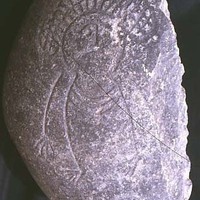Papers by Kalaivanan Kalaivanan
punjaborthoassociation.com
Page 1. 1 Pb Journal of Orthopaedics Vol-XII, No.1, 2010 Role of Interlock Nailing of Tibial Diap... more Page 1. 1 Pb Journal of Orthopaedics Vol-XII, No.1, 2010 Role of Interlock Nailing of Tibial Diaphyseal Fractures Done Under Image Intensifier-A Study of 25 Cases Jaswinder Pal Singh Walia MS*, Avinash Chander Gupta MS**, K. Kalaivanan MBBS***, Sargun Singh**** ...

Sustainable Water Resources Management, 2017
The purpose of this study was to assess the drinking and irrigation groundwater quality in Kodava... more The purpose of this study was to assess the drinking and irrigation groundwater quality in Kodavanar sub-basin, Dindigul and Karur region, Tamil Nadu, India. Water samples were measured according to the geological and hydrogeological aspects. Geographically, the study area is situated in 10°11 0 37 00-10°27 0 30 00 N and 77°37 0 46 00-78°01 0 10 00 E with an entire area of 2255 km 2. Overall, 82 groundwater samples were taken from bore wells and various physicochemical parameters and major ion chemistry like pH, electrical conductivity, total dissolved solids, calcium, magnesium, sodium, potassium, bicarbonate, chloride, sulfate, nitrate, and phosphate were analyzed. According to the groundwater quality, Gibbs, United States Salinity Laboratory and Wilcox's diagrams were plotted; and groundwater quality has been illustrated for domestic and agricultural purposes. Gibbs plot results showed that 87% of the sample falls under the rock dominance. Sodium absorption ratio 100%, sodium percentage 85%, and Kelly's ratio 51% recommends that majority of the sample falls under the acceptable border of irrigation and drinking utility. Using geospatial analysis, the water-quality index was calculated. The result shows that most of the area comes under excellent (402 km 2) and good (1297 km 2) groundwater categories. Based on the studies, the quality of groundwater is safe for drinking purposes, but in a limited sample, which exceed the limit, due to anthropogenic activities.

Arthroplasty Today, 2016
Background: To evaluate the midterm clinical outcome, functional outcome, associated complication... more Background: To evaluate the midterm clinical outcome, functional outcome, associated complications, and survivorship of high-flexion posterior-stabilized rotating-platform total knee arthroplasty. Methods: We prospectively analyzed 701 knees in 501 patients, who underwent total knee arthroplasty using high-flexion posterior-stabilized rotating-platform prosthesis. Patients were assessed preoperatively and postoperatively for their ability to kneel, do full squats, do half squats, and sit cross-legged by using a patient-administered questionnaire. Results: Significant improvement was seen in patient-reported outcomes at the mean follow-up of 5.5 (range, 5-7) years. Mean flexion achieved postoperatively was 135 (range, 120-150) from a mean preoperative flexion of 108.8 (range, 90-120). Ninety-five percent of patients were able to sit crosslegged, 90% were able to kneel, 70% were able to perform a half squat, and 20% were able to perform a full squat. Conclusions: Posterior-stabilized, rotating-platform, high-flexion design provides good postoperative flexion, functional outcome, and good midterm survivorship.
Computer and Information Science, 2011
This paper presents a computer vision system for automatic facial expression recognition (AFER). ... more This paper presents a computer vision system for automatic facial expression recognition (AFER). The robust AFER system can be applied in many areas such as emotion science, clinical psychology and pain assessment it includes facial feature extraction and pattern recognition phases that discriminates among different facial expressions. In feature extraction phase a combination between holistic and analytic approaches is presented to extract 83 facial expression features. Expression recognition is performed by using radial basis function based artificial neural network to recognize the six basic emotions (anger, fear, disgust, joy, surprise, sadness). The experimental results show that 96% recognition rate can be achieved when applying the proposed system on person-dependent database and 93.5% when applying on person-independent one.











Uploads
Papers by Kalaivanan Kalaivanan